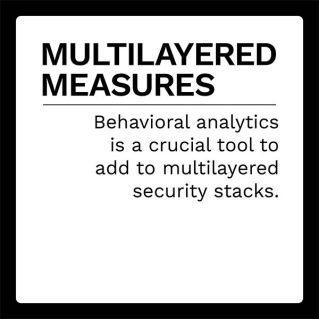Why Data Scientists Say Behavioral Analytics Is a Security Stack Must-Have

While the pandemic accelerated the digital shift around the world, it also allowed fraudsters the opportunity to refine and build on their techniques. The Federal Trade Commission reported that in 2021, consumers lost $5.8 billion to fraudsters, but this number most likely is a lowball, as much fraud was likely not reported. The variety of tactics fraudsters can use to steal consumer information are countless, and each one has its own unique way of exploiting current systems to fool security measures.
As more of consumers lives move onto online channels, instances of fraud will only continue to rise with it. The cost of a data breach rose 10% in 2021, to reach $4.24 million per incident. As the cost of these fraud attacks rises, businesses have invested in technologies to help fight this fraud, such as biometrics and multifactor authentication (MFA), but even the best systems have weaknesses that bad actors have learned to beat. Because of this, fraud protection systems must include a multilayered approach that includes behavioral analytics as an additional line of defense.
Merchants using a multilayered fraud defense successfully reduced fraud volume and fraud losses by 71% and 12%, respectively. These systems use biometrics, MFA or some other authentication technique in onboarding or login, and then utilize behavior analytics as an extra layer. Using behavioral analytics, even if these bad actors collected the necessary information to hack into an account, they would still have to type in this illegally obtained data, potentially revealing themselves as fraudulent. These tools are widely available for businesses to grab hold and take advantage of.
The April edition of the “Monetizing Digital Intent Tracker®” explains why unilateral defensive systems are insufficient to deal with bad actors leveraging a variety of fraud patterns. It also examines how adding a behavioral analytics layer to cybersecurity stacks can reduce fraud without adding needless obstacles to the onboarding experience.
Developments From the Behavioral Analytics World
Adults are not the only ones falling victim to cybercriminals’ attacks. A recent study found that 1 in 50 children were victims of identity theft in 2021, costing their families on average $737.  Most of this fraud was committed by someone close to the victim; 73% of victims knew the person who committed the fraud. The fraudsters were sometimes allowed access to other accounts and used information from those accounts to commit the fraud. Some even occurred from children sharing personal information that could be leveraged to access accounts.
Most of this fraud was committed by someone close to the victim; 73% of victims knew the person who committed the fraud. The fraudsters were sometimes allowed access to other accounts and used information from those accounts to commit the fraud. Some even occurred from children sharing personal information that could be leveraged to access accounts.
The rise in use of cryptocurrency has attracted the interest of cybercriminals as well. Scams involving the digital currency rose 14% in the United Kingdom between September 2020 and March 2021, according to the U.K.’s Financial Conduct Authority (FCA). The FCA’s ScamSmart Warning List, a tool that allows consumers to check if investment opportunities are fraudulent, saw a hike in usage of 49% in the same time period due to increased scams involving crypto.
For more on these and other behavioral analytics news items, visit the Tracker’s News & Trends.
How Elevate Fights Fraud Using a Multilayered System Featuring Behavioral Analytics
Companies are constantly battling fraud, especially with the wide variety of tactics that can be used to break security systems and steal client information and finances.
In this month’s Feature Story, PYMNTS spoke with Ryan Prince, senior data scientist at nonprime lender Elevate, on how the company deploys behavioral analytics with multilayered prevention systems to keep fraud in check.
PYMNTS Intelligence: Leveraging Behavioral Analytics to Complement Other Fraud Prevention Measures
Fraud is continuously changing as bad actors work through weaknesses found in different prevention strategies. While each method of authentication has weaknesses, these flaws can be strengthened by deploying a multilayered approach, especially effective with the use of behavioral analytics.
This month, PYMNTS delves into the security weaknesses of authentication systems, and how including behavioral analytics in a multilayered approach is more effective in fighting fraud.
About the Tracker
The “Monetizing Digital Intent Tracker®,” a PYMNTS and Neuro-ID collaboration, is the go-to monthly resource for updates on trends and changes in behavioral analytics.

